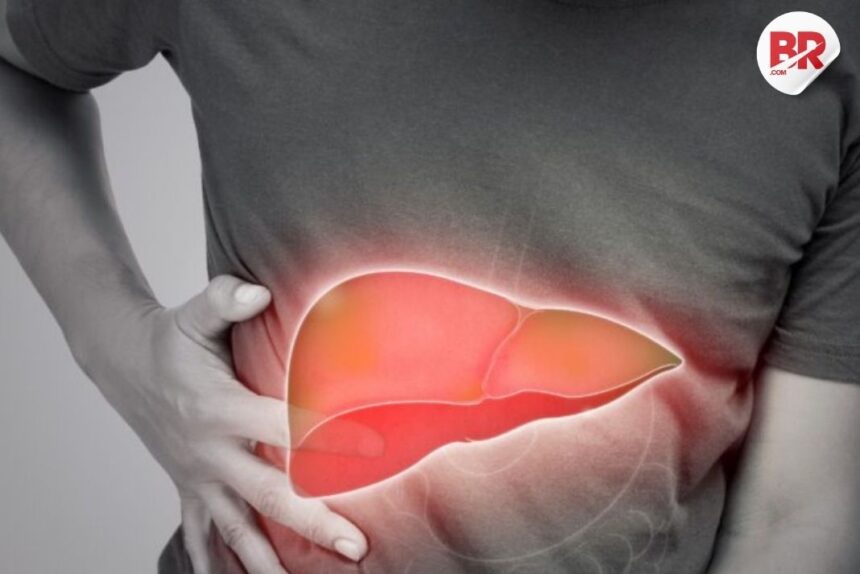Non-Alcoholic Fatty Liver Disease (NAFLD) is becoming a growing concern in India, affecting about one in three people. This includes even those who are young, fit, or lean, which makes it especially alarming because it doesn’t show obvious signs until it’s too late.
What is NAFLD?
NAFLD is when too much fat builds up in the liver, but the person doesn’t drink much or any alcohol. It’s the most common type of liver disease worldwide, and in India, more people are getting affected. NAFLD can range from harmless fatty liver to a more serious condition called non-alcoholic steatohepatitis (NASH), which can cause cirrhosis, liver failure, or even liver cancer.
Why Should You Care?
NAFLD is often called a “silent killer” because it doesn’t show symptoms in the beginning. By the time you feel sick, the liver may already be badly damaged. So, detecting it early is really important to avoid long-term health problems.
The Rise of NAFLD in India
In India, NAFLD cases have been increasing rapidly. Studies show that nearly 30-40% of people in the country may have some form of this disease. What’s concerning is that it’s not just older or overweight people who are getting it—young, healthy, and lean people are also being diagnosed.
Read More: Excessive Seed Oil Consumption May Fuel Aggressive Breast Cancer, Study Warns
Silent Symptoms of NAFLD
NAFLD doesn’t have clear symptoms in the early stages, but there are some signs to watch out for:
- Feeling tired even after resting
- Unexplained weight loss
- Swelling or pain in the upper right side of the stomach
- Nausea or loss of appetite
If you notice any of these symptoms, it’s important to see a doctor. Catching it early can help prevent serious problems.
Why is NAFLD Increasing in India?
There are several reasons why NAFLD is spreading in India:
- Obesity and metabolic issues: As more people lead a sedentary lifestyle, obesity rates are rising, which increases the risk of NAFLD.
- Diabetes: High rates of diabetes in India make people more prone to NAFLD.
- Unhealthy diet: Eating too many processed foods, sugary drinks, and unhealthy fats leads to fat buildup in the liver.
- Genetics: South Asians are genetically more likely to get NAFLD due to factors like insulin resistance and fat around the belly.
Read More: Say Goodbye to Cancer Risk with These 10 Easy, Life-Changing Habits!
Why Your Liver is Important
Your liver is essential for your health. It helps to:
- Remove toxins from your body
- Regulate blood sugar levels
- Process nutrients
- Produce proteins that help with blood clotting
When the liver is damaged, it can’t perform these tasks properly, which can lead to major health issues.
The Dangers of Delayed Diagnosis
NAFLD progresses in stages:
- Simple fatty liver: Fat builds up in the liver, but there’s no major harm.
- NASH: The liver becomes inflamed, and this can lead to scarring.
- Fibrosis: Scar tissue builds up, and the liver’s function starts to decline.
- Cirrhosis: The liver becomes severely scarred and can’t work properly.
- Liver failure or cancer: In serious cases, NAFLD can lead to liver failure or liver cancer.
Detecting the disease early can prevent it from getting worse.
How to Protect Your Liver
The good news is that NAFLD is preventable and manageable if you make some lifestyle changes:
- Eat a healthy diet: Focus on fresh fruits, vegetables, whole grains, lean proteins, and healthy fats. Avoid sugary drinks, fast food, and processed snacks.
- Exercise regularly: Aim for at least 150 minutes of moderate exercise per week, or 75 minutes of vigorous activity. Strength training and high-intensity interval training (HIIT) are also helpful.
- Maintain a healthy weight: Losing 5-10% of your body weight can improve liver health.
- Keep your blood sugar and cholesterol in check: If you have diabetes or high cholesterol, make sure to manage them with your doctor’s help.
- Limit alcohol: Even small amounts of alcohol can worsen NAFLD.
- Quit smoking: Smoking can damage your liver more.
Also Read: Is Your Daily Office Coffee Quietly Destroying Your Heart? The Shocking Truth You Need to Know!
When to Get Tested
Since NAFLD often doesn’t show symptoms early on, it’s important to get tested if you have risk factors like obesity, diabetes, or a family history of liver disease. Your doctor may recommend:
- Blood tests: To check for liver damage.
- Imaging tests: An ultrasound or MRI can show fat in the liver.
- Liver biopsy: In some cases, a biopsy may be needed to see how much damage has occurred.
Early detection is key to preventing complications and improving long-term health. If you’re at risk, don’t wait for symptoms—take action now to protect your liver health.




